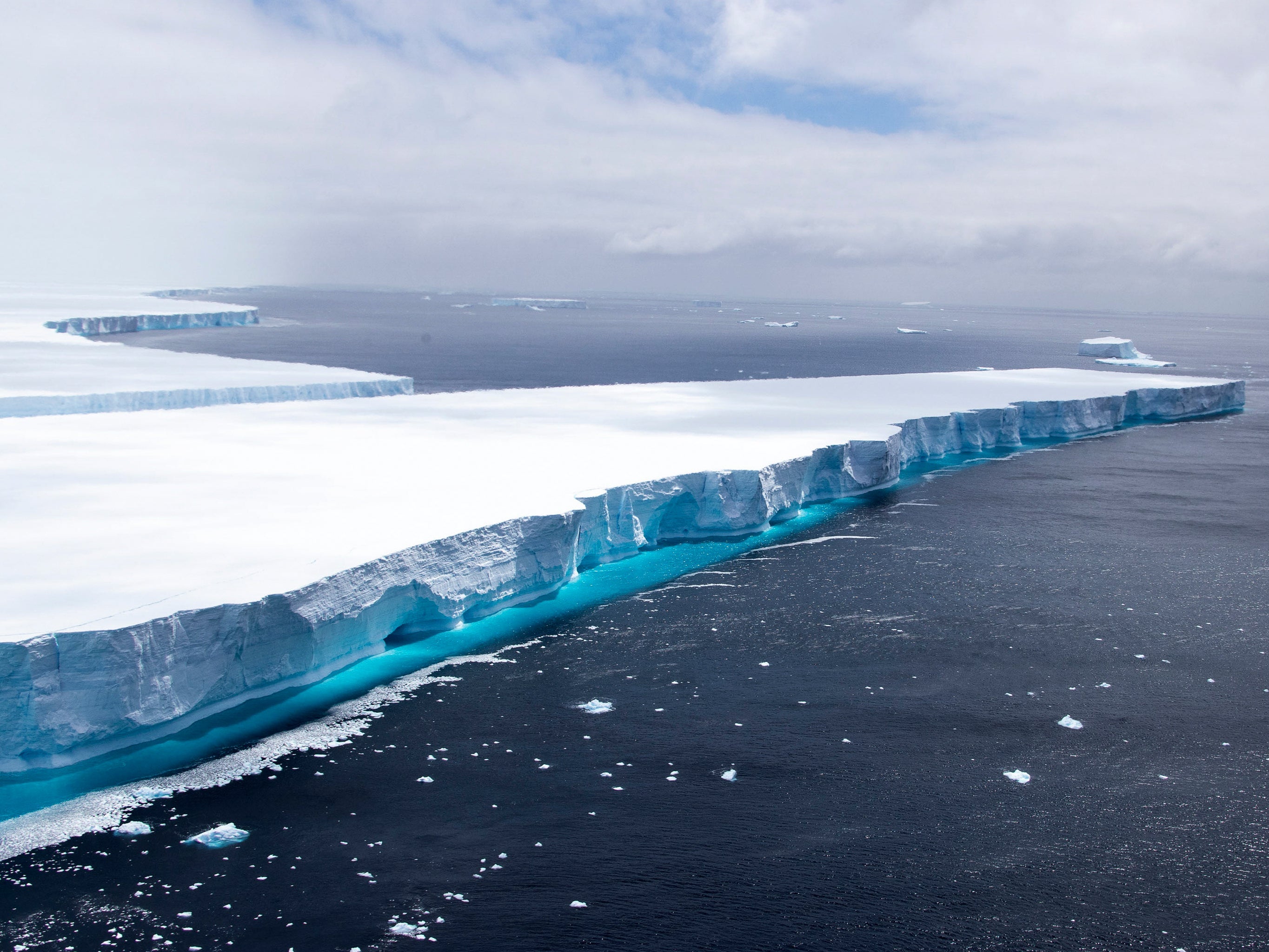A68: ‘Megaberg’ dumped billions of tonnes of water into ocean every day
A68 broke up into smaller fragments northeast of South Georgia in 2021 that were no longer worth tracking

The iceberg that was once the largest in the world was dumping more than 1.5 billion tonnes of freshwater into the ocean every day at the peak of its melting, experts say.
A68 covered an area of nearly 2,300 square miles and was bigger than Norfolk when it broke away from the Larsen C ice shelf in the Weddell Sea on the edge of the Antarctic Peninsula in mid-2017.
It was originally thought that the iceberg could have lasted for several years, potentially taking up to a decade to melt, if it had become grounded on South Georgia.
But instead it broke up into smaller and smaller fragments northeast of the British overseas territory that were no longer worth tracking.
Environmental researchers at Leeds University have examined satellite data to calculate the varying melt rates as the iceberg broke away from Antarctica, through the Southern Ocean and up into the South Atlantic.
It was feared the megaberg would ground in the shallows and obstruct the foraging routes of millions of for species such as penguins and seals, which will need to fish to feed their young on land. However, A68 lost sufficient depth to stay afloat.
“It does seem that it briefly touched the continental shelf. That’s when the berg took a turn and we saw a small piece break off. But it wasn’t enough to ground A68,” lead author Ms Anne Braakmann-Folgmann from the Nerc Centre for Polar Observation and Modelling at Leeds told BBC News.
“And I think you can see why in the thickness estimates,” added co-author Prof Andrew Shepherd. “By that stage the berg’s keel was 141m, on average, and the bathymetry (depth) charts in the area showed 150m. It was a close call in the end.”
Current research recognises that giant tabular, or flat-topped, icebergs have a considerable impact on the environments they range over - known to alter local currents and germ new biological production after dropping organic matter picked up over their lifetime into the ocean.
“We think there’s a really strong signal in the changing flora of the phytoplankton species around A68, and also in the actual deposition of material to the deeper parts of the ocean. The particle sensor on the glider was picking up some very strong signals of deposition coming from the berg,” biological oceanographer Prof Geraint Tarling. told the broadcaster.
Join our commenting forum
Join thought-provoking conversations, follow other Independent readers and see their replies
Comments